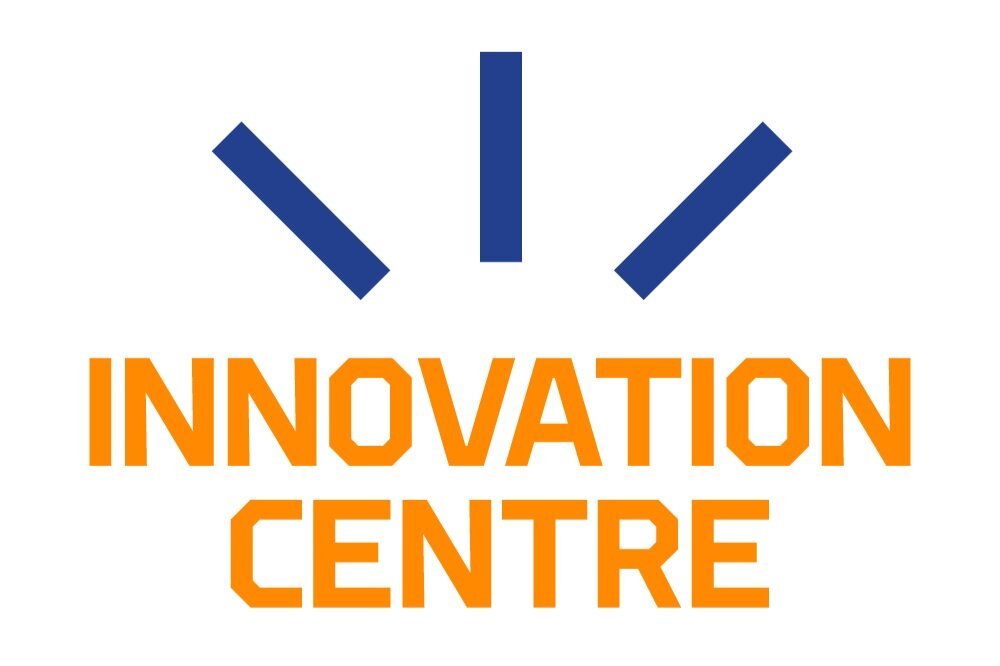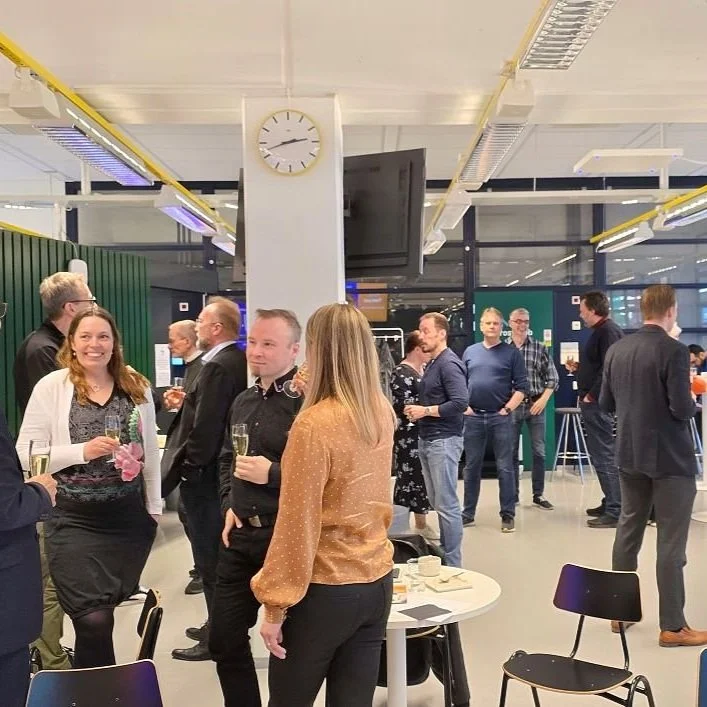Inventors celebrated at University Inventor Day — Lloyd Ruddock named Inventor of the year!
At the University Inventor Day on May 15, inventors from the University of Oulu and their innovations took the spotlight. The event revealed the university researchers who submitted the most invention disclosures in 2024, and included inspiring expert talks. Around 50 researchers and other participants interested in the topic attended the event.
The event opened with Jouko Uusitalo, Director of the Innovation Centre, who presented the 2024 innovation statistics of the University of Oulu. It was an active year on nearly all fronts, with a few records set in invention disclosures and patents – a promising sign for future commercialization.
In 2024, we received a record-breaking 72 invention and copyright disclosures, half of which originated from open research and the other half from commissioned or contract research. Eleven of the commissioned inventions were transferred to clients for potential patenting. Of the other innovations, the university filed patent applications for 15 – the highest number ever! The university was granted five new patents. Total revenues from IP sales and licensing amounted to €424,000. At least 40 % of the net income is paid to the inventors.
The university also rewards inventors with fees for invention disclosures, patent applications, and granted patents. Did you know that these fees increased in 2025? Inventors now receive €400–600 for filing a disclosure, depending on the number of inventors (previously €300). Patent application and grant rewards have also increased to €1,500–2,000 each (previously €1,000–1,500). Last year, over €212,000 in rewards were paid to inventors – another new record!
Read more about the 2024 innovation results here.
12 invention disclosures and 7 innovation tips
Professor Lloyd Ruddock was named Inventor of the year after submitting an impressive 12 invention disclosures in 2024! His research focuses on protein folding within cells. The CyDisCo technology he developed modifies bacteria so they can, in turn, modify human proteins. Ruddock has since discovered additional scalable solutions to the same challenge.
In his speech, Ruddock shared seven innovation tips for researchers:
Believe in your innovation: Your invention will be questioned repeatedly, but don't let that discourage you.
Know what is needed: Sometimes research priorities and industry needs don’t fully align. Innovators must understand real industry problems — a topic also addressed by our final speaker, Suvi Julin.
Be patient: Creating, developing, and patenting an invention takes time.
Network: The best ideas often emerge from interaction with others.
Get your hands dirty: Practical lab work is vital.
Capture the moment: Recognize when you're at your most creative and capture your ideas immediately.
Play role-playing games: Yes, really — creative activities like role-playing can enhance innovative thinking.
Researchers Antti Arvola, Antti Tölli, Bikshapathi Gouda, Jarmo Hietanen, Mehdi Bennis, Rafal Sliz, Toni Kauppinen, and Ulla Lassi each submitted 3–5 invention disclosures in 2024. Maija Risteli and Tuula Salo submitted seven each. Congratulations to the Inventor of the Year and all researchers who contributed inventions!
What should researchers know about the patent process?
After Ruddock’s speech, experienced patent attorney Miika Tupala from Papula-Nevinpat took the stage. With a background in both research and industry, Tupala provided insights into the patenting process and what researchers should keep in mind when inventing. He emphasized that ownership rights depend on the nature of the research: they may belong to the researcher, the university, or a third party. However, by law, inventors are always entitled to fair compensation.
A patent grants the right to prohibit the commercial use of an invention in a specific country for a limited time. It protects technical solutions that are both new and inventive. Patents do not protect discoveries, theories, or standalone software without technical application. Tupala also reminded us that patents don’t prevent non-commercial use, such as in research.
So how do you generate inventions? Tupala advised starting by observing your environment. By staying alert, you can identify real-world challenges that need fresh perspectives.
He outlined the steps of the patent process:
Submit an invention disclosure with a clear description.
Ensure the novelty of your invention.
Prepare the patent application with a patent attorney – no new content can be added later.
File the application before any public disclosure!
Negotiate claim scope with the patent office. International filing must occur within a year.
The application will be accepted or rejected within approximately 18 months.
What do companies expect from university collaboration?
Collaboration between universities and industry provides businesses with access to cutting-edge scientific knowledge, fresh perspectives, and innovations. For researchers, it offers opportunities for impact and additional funding. While all parties benefit, expectations can differ. So, what do companies actually want from research collaboration?
This was the focus of the fourth speaker, Suvi Julin, an IPR and technology lawyer at Berggren Oy.
According to Julin, companies expect a strong research foundation that supports product development and enables patentable innovations. They also appreciate fresh ideas not limited by day-to-day business routines. Since collaborations often involve sensitive information, confidentiality is critical for companies.
Clear and open communication is essential for successful collaboration. Goals, expectations, and rights should be agreed upon before the project begins. When well-structured, research collaborations can strengthen a company’s market position. Research-backed solutions inspire trust among customers and stakeholders. Intellectual property rights, such as patents, help protect innovations and prevent competitors from using the same solutions.
Do you have a research-based idea?
After the speeches, the event continued with a toast and networking. It was great to see many researchers stay to talk and exchange ideas long after the presentations ended. We will organize the event again next year and would love to hear your feedback and suggestions! Share your thoughts here. Thank you to everyone who participated and contributed to this successful event!
If you're interested in turning your research idea into a real-world product, service, or practice, don’t hesitate to contact the Innovation Centre! We can help with patenting, commercialization, and connecting with industry partners.
Contact us:
Janne Haverinen
janne.haverinen@oulu.fi
+358294488055
Markku Känsäkoski
markku.kansakoski@oulu.fi
+358294487506





